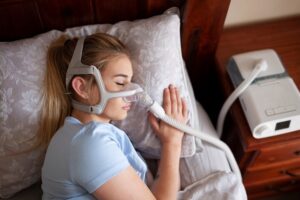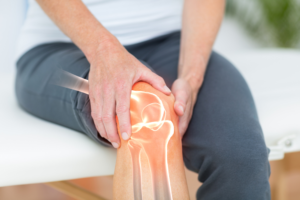What is a Knee Scooter?
There are many options for people who can not bear weight on their foot or ankle due to surgery, injury or wound. One of these options is the Knee Scooter. Also known as Knee Walker or Roll About after the name of the original manufacturer, they can provide improved mobility, stability and comfort compared over standard underarm crutches.
Function
All Knee Scooters consist of a cushioned platform which the patient kneels upon to support their body weight while keeping all weight off of the injured foot or ankle. The opposite leg is used to propel the wheeled scooter providing the patient mobility. Knee Scooters fold for compact storage and most fit in the trunk or back seat of a car or even on a commercial airplane. Knee Scooters can be used both indoors and outdoors, but should not be used on stairs.
Design Differences
Over the last decade many refinements have been made to these devices: Turning, Knee Pads and Wheels.
- Turning: Early designs did not turn, forcing the patient to lift the front wheels to change direction. Not only does this require upper body strength and coordination, it could lead to falls. Newer turning designs provide increased maneuverability while maintaining stability.
- Knee Pads: Original units consisted of a fixed one-piece padded bench. Modern units have adjustable pads that accommodate casts, fracture boots and surgical dressings
- Wheels: Larger wheels accommodate small bumps such as those found at the threshold of a door or a crack in the sidewalk. Small diameter wheels, especially small caster wheels like those found on a grocery cart, should be avoided.
Who Might Benefit
The Knee Scooter allows patients who cannot bear weight on their foot or ankle an additional option to crutches. Users must be able to kneel comfortably on the side of the injured foot or ankle. Knee Scooters are not as physically taxing to the upper body as standard crutches, yet still require basic balance and a level of physical activity. Lacking these abilities, the patient might be best served by a wheelchair, seated scooter or powered scooter.
Insurance Coverage
Each insurer and policy is unique so it is best to contact your individual provider to see if a Knee Scooter is a covered benefit. The code used to describe Knee Scooters is HCPC Code E0118: Crutch alternative with or without wheels.
Where to Shop
Knee Scooters can be found at some local pharmacies or durable medical equipment stores. They are also widely available through dedicated online providers that offer competitive rates and deliver directly to your home, work or hospital room. Used units may also be found on Craigslist, eBay and similar websites.
Cost
Knee Scooters can be purchased new from $300 to $800 depending on the supplier and model. Renting may be an alternative for those non-weight-bearing for less than three months. Rental rates vary from $35 to $80 per week and $100 to $320 per month. Some suppliers charge a deposit that can be as much as the full purchase price. Others charge for delivery and/or pickup. Make sure you know all associated costs along with the policy for returning the unit if it doesn’t meet your needs. You should be able to determine this within three days.




